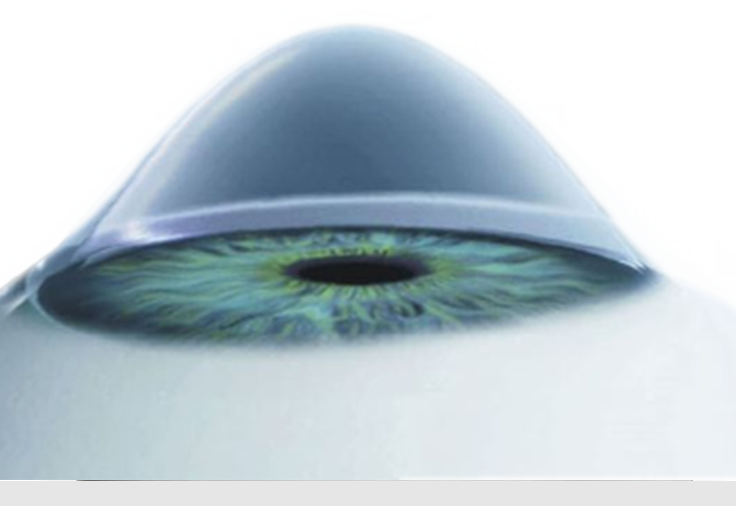Keratoconus

Keratoconus
Keratoconus: Symptoms, diagnosis, and treatment
Keratoconus is a progressive eye condition in which the cornea, instead of maintaining a spherical shape, gradually thins and takes on a conical shape. As a result, light refraction becomes irregular, leading to significant vision distortions. Keratoconus can severely impact quality of life, but with modern diagnostic and treatment methods, the condition can be effectively managed.
Causes and symptoms of keratoconus
The exact causes of keratoconus are still unknown, but its development may be influenced by genetic predisposition, mechanical stress on the eyes (such as frequent rubbing), and chronic allergies. The main symptoms of keratoconus include:
• Blurry or distorted vision
• Sensitivity to light
• Double vision (especially when viewing with one eye)
• Difficulty in finding the right glasses or contact lenses due to the constant change in corneal shape.
How is keratoconus diagnosed?
The diagnosis of keratoconus involves a detailed examination of the cornea's condition. In our clinic, we use advanced corneal topography equipment that allows precise measurement of the cornea's shape and thickness. This helps determine the stage of the disease and develop an individualized treatment plan. Early diagnosis is crucial, as timely treatment can slow the progression of keratoconus and prevent further vision deterioration.
Modern treatment methods for keratoconus
There are several effective treatment options for keratoconus, and the choice of the appropriate method depends on the severity of the condition and the individual characteristics of the patient.
• Corneal cross-linking
Corneal cross-linking (CXL) is a procedure used to strengthen the collagen fibers in the cornea, which helps slow down or stop the progression of keratoconus. The procedure involves the application of vitamin B2 (riboflavin) and ultraviolet light, leading to the formation of new chemical bonds in the corneal tissue and improving its stability.
• Corneal segment implantation (Intrastromal Rings)
These are thin, arc-shaped plates made of a fully transparent material that is completely biocompatible, preventing rejection by the body. The rings serve as a framework, halting the deformation process and restoring the curvature of the cornea.
• Corneal transplantation (or Keratoplasty)
This is performed in advanced stages of keratoconus, when other procedures can no longer improve the patient's vision. In the later stages, the cornea becomes too thin and deformed, leading to significant vision loss. Corneal transplantation can be either partial or full, depending on the extent of the damage to the corneal layer.
Why choose our clinic for keratoconus treatment?
Our clinic offers a comprehensive approach to the diagnosis and treatment of keratoconus, utilizing advanced equipment and the latest methods. Our team of experienced ophthalmologists will help you choose the most suitable treatment, tailored to your individual needs. We are committed to ensuring that each patient achieves the maximum possible improvement in vision and quality of life.
